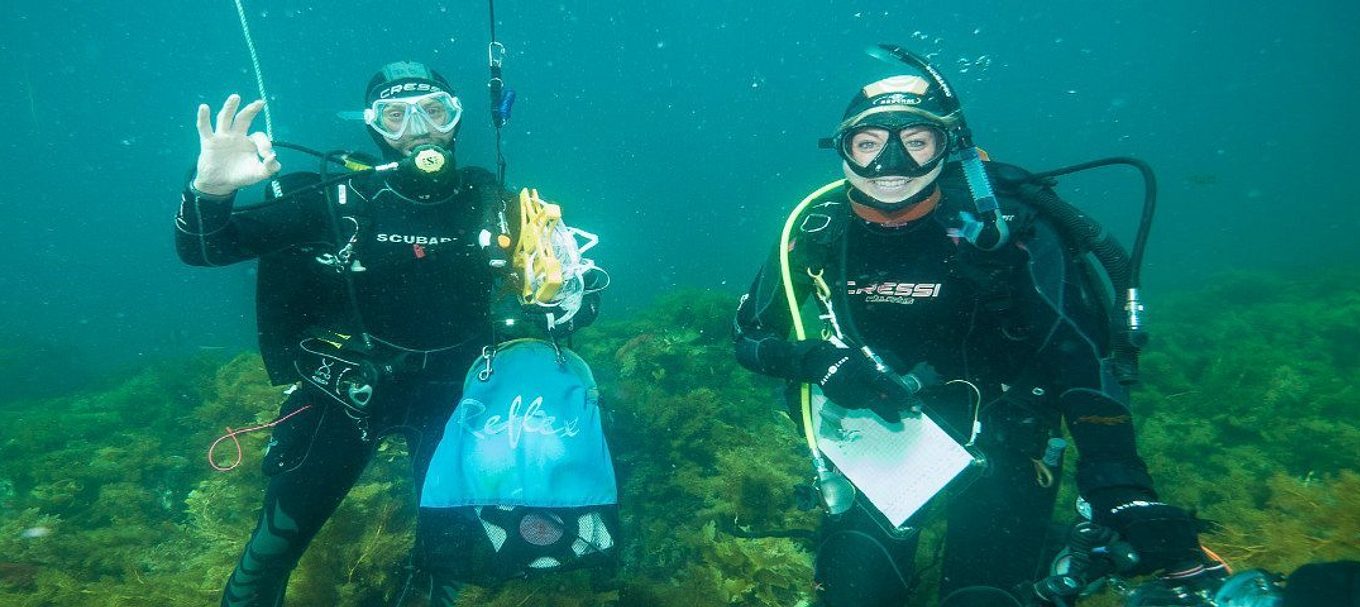
Insider guide: Eyre Peninsula marine parks
Shelley Harrison –Marine Parks Regional Coordinator, Southern and Eastern Eyre Peninsula
How would you describe your job to someone at a BBQ?
Diverse, challenging and rewarding. I would describe my job as one which ensures the sustainability of our beautiful oceans for the future.
I have two young children, and I want to ensure that we still have this amazing and diverse marine environment for their children and grandchildren. My job allows me to do that. I am making a difference to our amazing planet.
There are three main aspects to my job managing six marine parks. These include community engagement, working with schools and community groups to highlight the importance of marine parks, marine parks compliance, which is all about making sure threats are removed from sanctuary zones and ensuring people are abiding by the rules, and monitoring and evaluation of the parks, which is more of a hands-on, science and monitoring task.
How did you get into this line of work?
My family had a shack at the Coorong when I was young and I grew up near Middle Beach, an area of sheltered tidal creeks and mangrove forests. The contrast between the sheltered waters and surf beaches of the Coorong, and the mangrove forests of Middle Beach amazed me. I was always infatuated with the diversity and wonder of the ocean. I have wanted to be a marine biologist since I was about two!
In addition to this, my family owned a wildlife park with a mobile unit that travelled to schools, teaching respect and responsibility for all our wonderful animals and the environment. My parents instilled conservation into my everyday life. I grew up with joeys hanging in bags on my bedroom door, and a house full of hand reared animals. My spare time was spent either caring for all of our animals or playing sport.
So, I went to university and ended up in Port Lincoln undertaking my Honours and PhD at The Lincoln Marine Science Centre. A community engagement job with marine parks came up in the last year of my PhD, so I applied and got the job. I didn’t know much about marine parks but I knew I loved marine life and that marine conservation was of the utmost importance. I’ve moved between community engagement, design of the parks, monitoring and evaluation to now managing marine parks. I’ve been in this role for eight years.
What do you encounter in a ‘normal’ day on the job?
No two days are the same. A large part of my role is community engagement, talking to people who want to know about marine parks, working with school groups and doing compliance activities. I spend some days out on the boat or in the car patrolling sanctuary zones, I spend other days in classrooms or out in sanctuary zones with school groups and Aboriginal communities, helping them to connect to Country. This job is very reactive, so some planned activities have to wait as other things pop up! Other days are spent in the office – but I definitely prefer being out in the parks.
What’s the most amazing thing you’ve seen in a marine park?
What I find most amazing about the environment I see is the amount of diversity and endemism that we have in our coastal and marine environment here in South Australia. We have greater diversity in our oceans here in SA than there is on the Great Barrier Reef – we have 7500 plants and animals in our waters and about 85 per cent of them are found nowhere else in the world. That means if we don’t look after them here and now, they will be lost.
Our waters are truly unique and amazing, I learn something new about them every day. There’s so much more to know, to explore and to understand. For example, we have the world’s smallest, live-bearing sea star, Little Patty, which is only found in six colonies on the West Coast of SA. It’s found nowhere else in the world.
South Australia’s marine species and environments deserve our respect and protection so future generations can also be amazed by them. I see it as my responsibility to empower the next generations with this knowledge. You can’t protect what you don’t understand.
What are your insider tips about marine parks?
I suggest everybody takes the time to get out to a marine park and learn about what lives there. There’s many ways you can do this including snorkelling, diving or fishing. You can also learn about the marine environment without getting your feet wet (maybe a little sandy) by going beachcombing. The beach is a window to the sea – have a look and find some treasures. The shells, crabs and cuttlefish bones give you a good idea of what’s out there. It’s important for us to have that connection with the environment, so we can learn to protect it.
January is the perfect time to explore South Australia’s marine parks with more than 40 family friendly activities on offer over the school holidays. Snorkel, join a ranger for a guided walk or check out Nature Play SA’s 20 things to discover in January’s park of the month, Encounter Marine Park.
Do you love spending time at the beach in summer? Share your tips for visiting South Australia’s marine parks in the comments below.
*Photo courtesy of Jason Tyndall, Nature Play SA.





